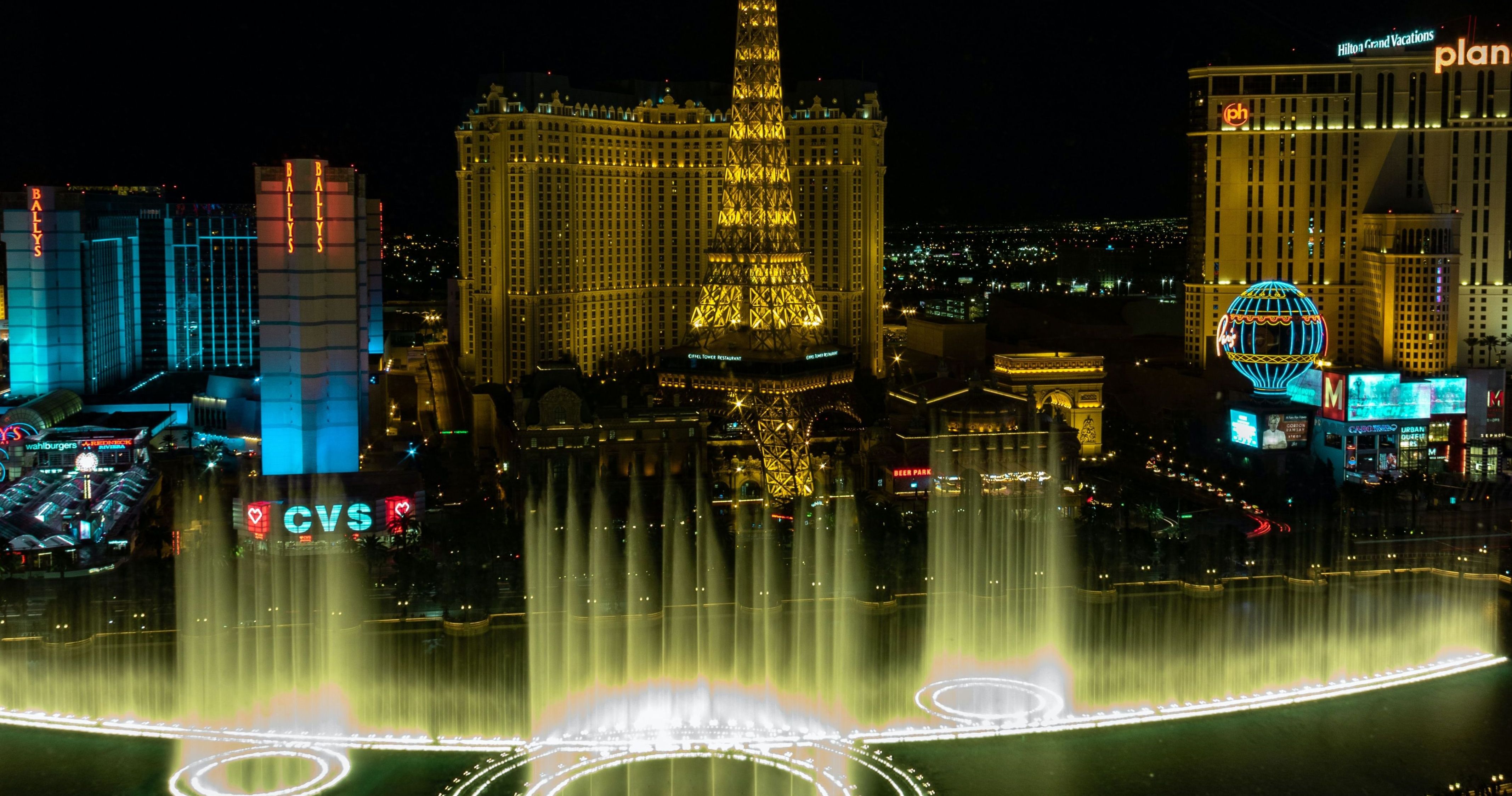
The History of Las Vegas

Whenever one thinks of Las Vegas, the same thing comes to mind. Glittering lights, casinos up and down the Strip, entertainment as far as the eye can see. But have you ever wondered how Las Vegas came to be in the middle of a desert? What prompted people to think, this is a good spot for non-stop entertainment? Get to know the history of Sin City and see just how the popular tourist town came to be below!
The Beginning
In May of 1905, Las Vegas was founded. The Union Pacific Railroad began passing through the desert area at this time and used the city as a spot to refuel and rest. It was not until 1911 that the area was actually incorporated into a city. By the 1930s, when the Great Depression began, thousands of people began flocking to the area as the Boulder Dam was being constructed on the Colorado River. This dam is known today as the Hoover Dam.
It was at this time that casino style gambling was legalized in Nevada. Clark County, where Las Vegas is located, legalized gambling in 1931 when a three-month gaming license was given to a club in downtown Las Vegas. It was at this time that the Strip got its name, as a three-mile road sprang up just south of the downtown area.
At the time, players would gamble with silver dollars. This eventually turned into plastic chips, the same type of chips that players use today.
Enter the Casinos
By 1941, the first themed resort was created. The El Rancho Vegas hotel and casino opened at this time and was quickly followed by the Last Frontier in 1942, then the Flamingo in 1946 and the Thunderbird in 1948. Casinos continued to pop up over the years as the area became more popular.
Fast-forwarding a bit to 1966, Las Vegas entered a rebirth of sorts. Hotels and casinos located on Fremont Street and the Strip were remodeled, with multi-story additions. At the same time, businessman Howard Hughes began buying hotels and other businesses in the city. It was his dealings that helped to start corporate ownership of hotel-casinos in Las Vegas and beyond.
Huge growth continued in the city and really boomed by 1985. Visitors continued to flock to Las Vegas to enjoy dining, casino gaming and a host of other entertainment options. The 80s was also a time when luxury started to reach the city. Steve Wynn is credited for entering the region at this time and creating some of the most luxurious properties in the city. Wynn helped to change the look of the city into an area that offered an upscale resort atmosphere.
Just ten years later, in 1995, the Fremont Street Experience opened up. A canopy was installed that cost $70 million to create, offering visitors an amazing sound and light show. This also marked the last time that the street would be used for traffic. It is now for pedestrians only.
By the mid-2000’s the Fremont East Entertainment District opened up. This area is known for non-gaming options like cocktail lounges and nightclubs. The area was part of a revitalization effort by the Redevelopment Agency of the city. The district offered travelers something new to discover, especially for those who were not as interested in the casino gaming aspect of Las Vegas.
Vegas Today
Las Vegas has certainly grown from the simple desert dirt roads to the massive paved highways. Since its inception, Las Vegas has grown exponentially, creating a popular destination for people from around the world to explore casino gambling, fine dining, exciting night clubs, live entertainment and pretty much anything else you can think of.
As one of the most famous cities in the world, Las Vegas sees over 49 million tourists a year and this number continues to grow. Some people are visiting Sin City for the very first time, while others travel several times a year to enjoy everything on offer. Tourism numbers are always quite high for the region as Las Vegas remains a top travel destination in the US.
Growth only continues in the region as travelers’ tastes change. While there will almost always be casino gaming, the region offers even more via live entertainment, dining, and unique experiences. Las Vegas is even home to an NFL team now, the Las Vegas Raiders. Sports fans can easily travel into the city to enjoy a Raiders game, post a sports bet, have dinner, and play at the local casinos.
The entertainment options are endless. By simply looking at how the city has changed in just over 100 years, it certainly begs the question, what will Vegas be like over the next century? There is no doubt that the popular tourist destination will continue to be a hot spot, offering a quality getaway for vacationers from the US and around the world!



